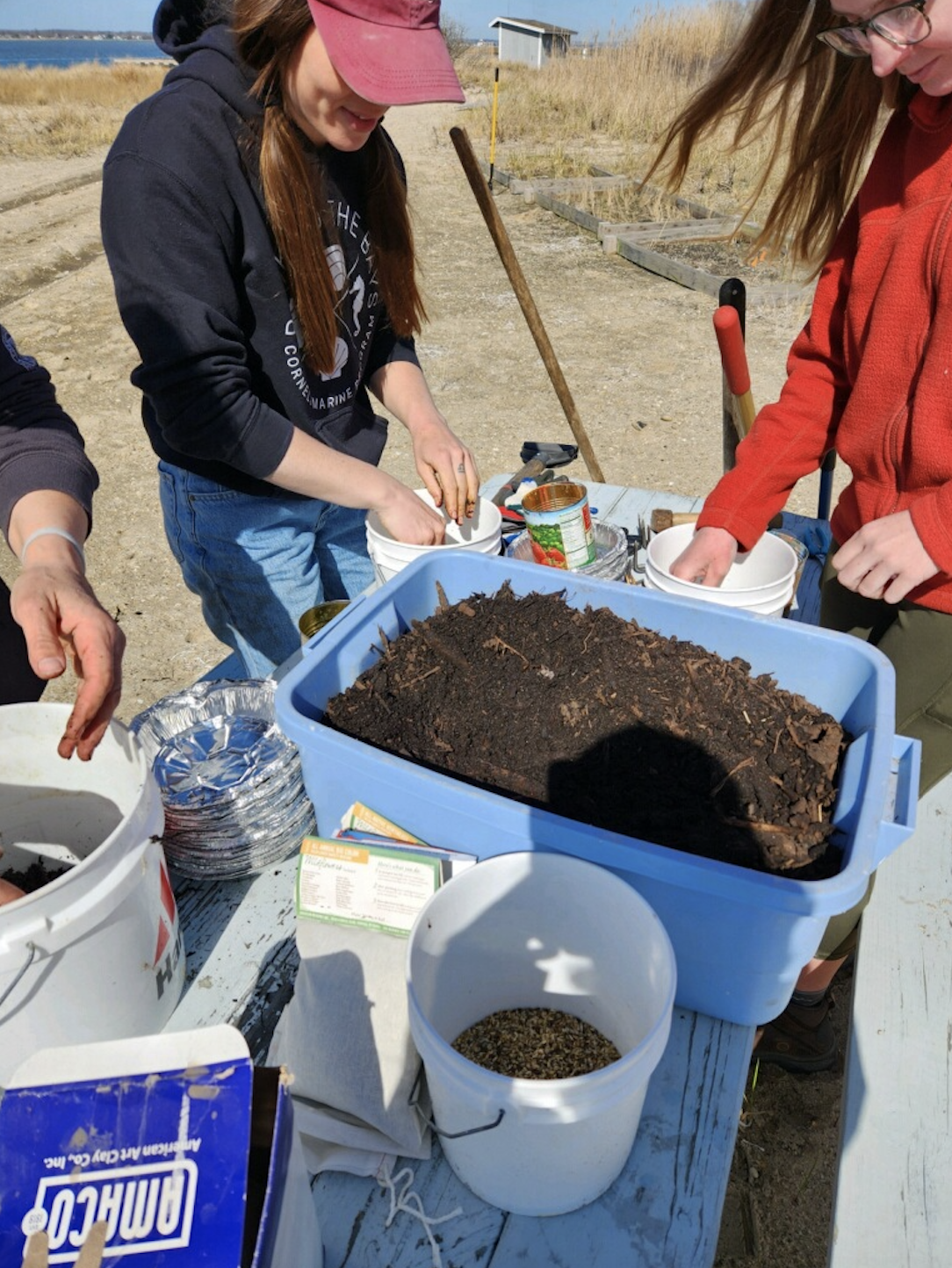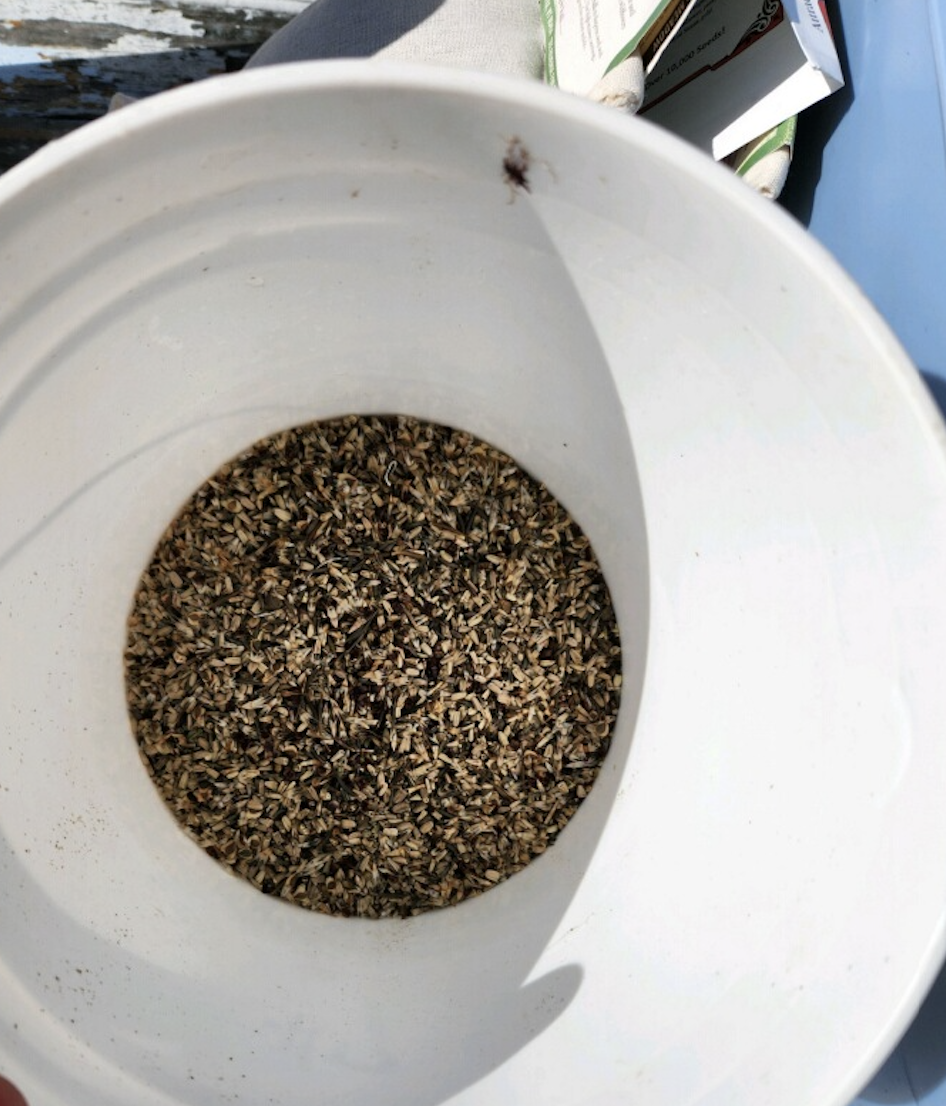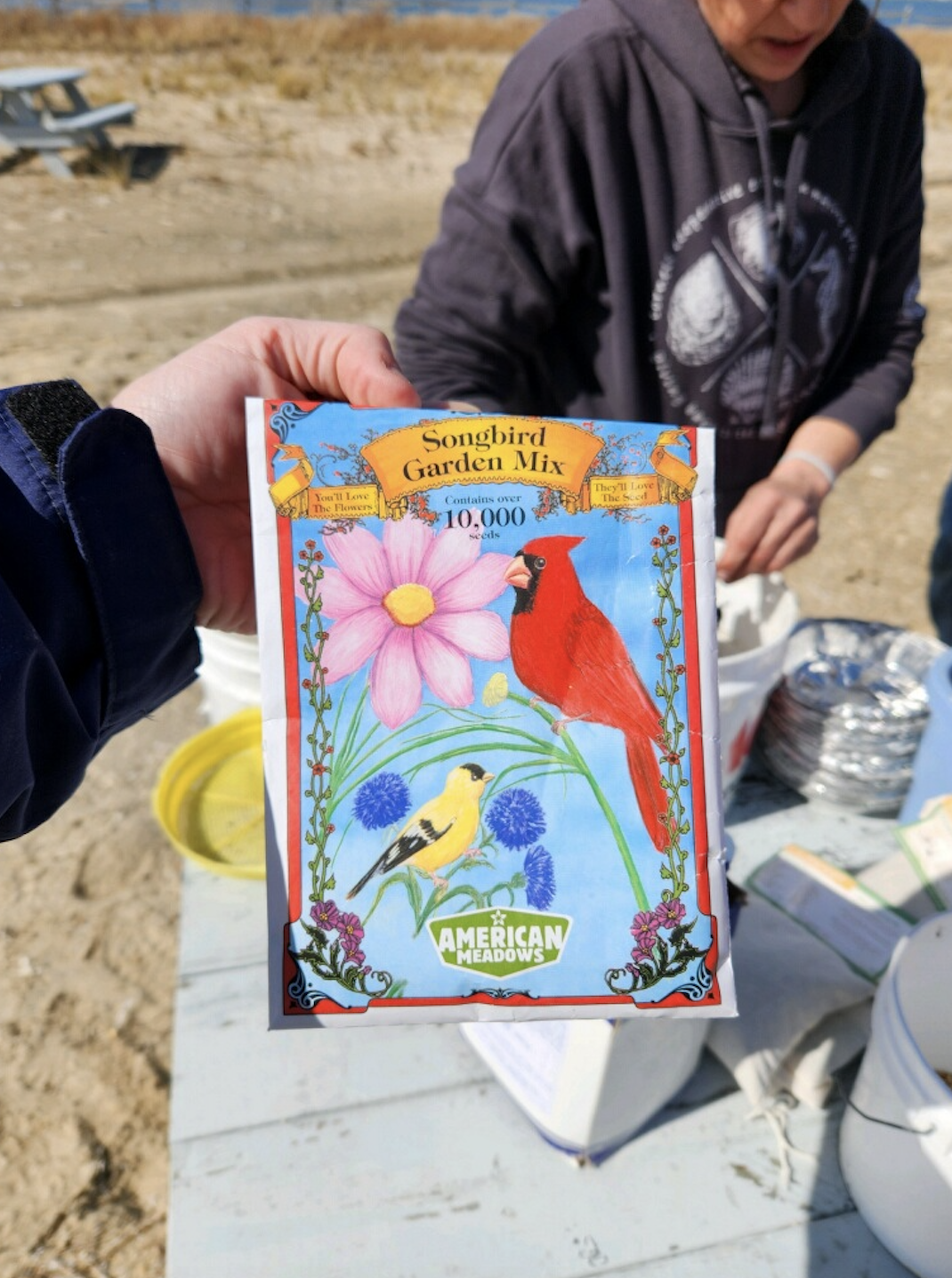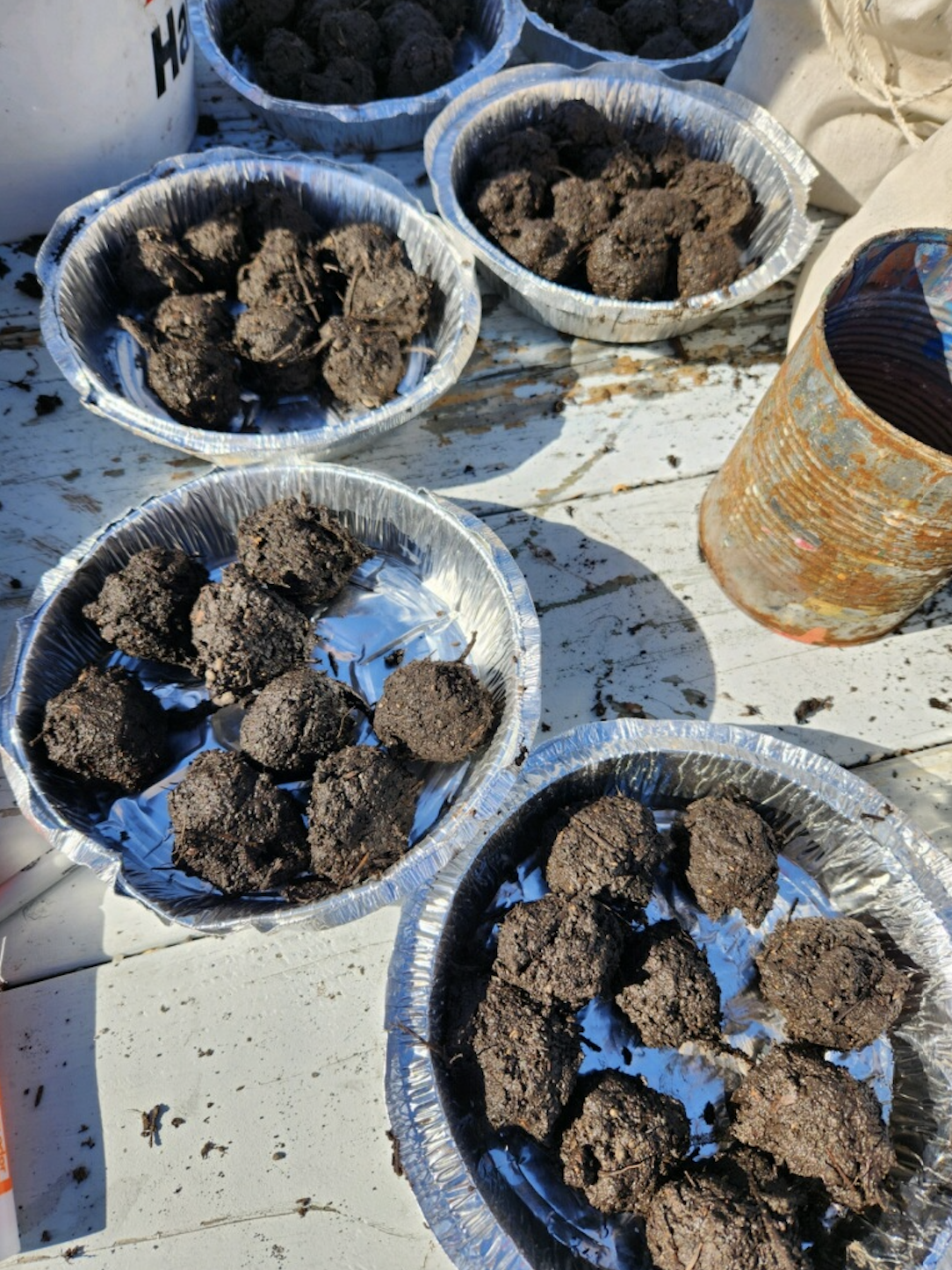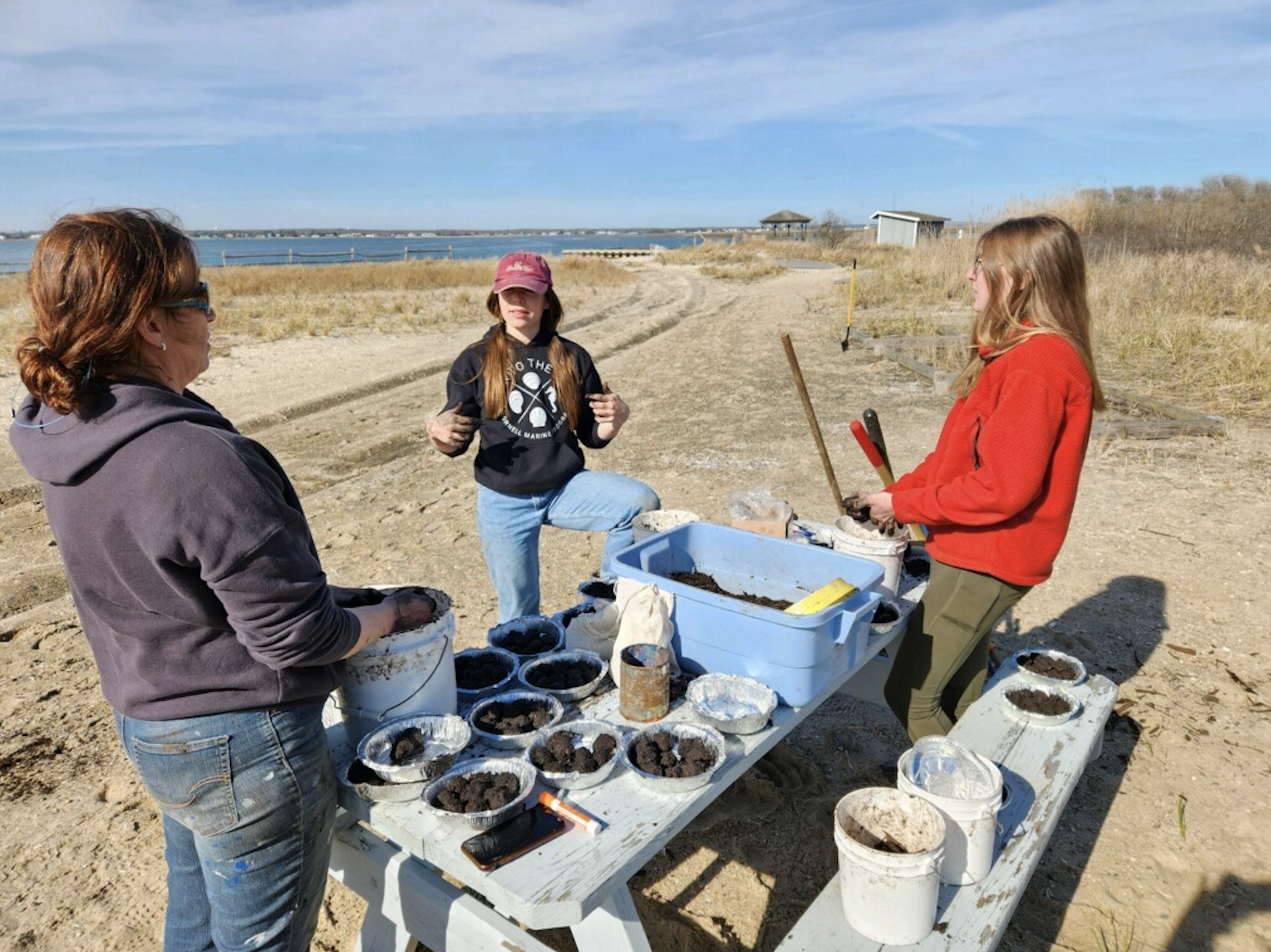SEAd Bombs for Spring
Our Back to the Bays team members and volunteers came together to make SEAd bombs this Tuesday, April 9 - a beautiful spring day! April 1 marked the opening of our Tiana Bayside facility in Hampton Bays. With April 20 set as Long Island’s last frost date due to milder winters, it made perfect sense for our Back to the Bays team and volunteers to gather and make SEAd bombs to launch in and around the area in the near future.
Back to the Bays team members and volunteers making annual SEAd bombs to launch this spring
More commonly referred to as seed bombs, they are typically made with a mixture of soil, clay, water, and seeds that are native to the area of the launch site. Back to the Bays began making SEAd bombs a few years ago as an educational endeavor to teach students and stewards about the importance of native coastal plant species. We make SEAd bombs with perennial flowers - meaning they grow back year after year - and annual flowers that last through one growing season. When gathering this Tuesday, we made SEAd bombs with a semi-native songbird and pollinator annual garden mix consisting of cornflower, coreopsis, cosmos, poppy, baby’s breath, wild sunflower, and four o’ clock.
Blue carbon has been the focus of our teams habitat work recently. If you’ve been staying in the loop with our recent posts, you might know a thing or two about blue carbon. As a refresher, blue carbon refers to the process in which coastal and marine plants - such as beachgrass and eelgrass - capture and store carbon from the atmosphere. Blue carbon environments have the potential to sequester carbon up to 10 times faster than a tropical rainforest! This process is vital to mitigating the effects of climate change and global warming. Coastal and marine plants - such as eelgrass and dune grass - are native to Long Island and a precious resource. Not only do they sequester carbon, they provide vital habitat for animals and help mitigate storm damage. While SEAd bombs don’t contain blue carbon specific plants, they are still important species that we need to restore and maintain to support our local ecosystems. They are a part of the blue carbon cycle - coastal plants, like the ones that will grow from our SEAd bombs, provide nutrients to blue carbon plants as they break down, wash into the bay and sea, and enter seagrass meadows and marshes.
Other beneficial land-based plants that are native to Long Island are milkweed, goldenrod, big bluestem grass, rosehip, and beach plum. Our perennial SEAd bombs include most of these plants. They diversify our landscapes, cultivating not only more beauty but ecological integrity. While relatively small in comparison to Long Island’s blue carbon species, these plants also partake in carbon sequestration, help mitigate coastal erosion, and encourage biodiversity. After launching, colorful blossoms from annual plants will provide nectar to beneficials, while perennial plants are doing their thing, staying green (foliating) and growing their root system for their first year of life. Many perennial varieties blossom in their second or third growing season.
Earth Day is in less than two weeks. While we celebrate Nature every day, this is an especially wonderful time to gather in the name of the environment. Our Back to the Bays team is meeting at our Tiana Bayside facility from 1 - 2:30 PM on Monday, April 22, with those of you who are interested in learning more about blue carbon and the marsh, exploring coastal habitat, making and launching seed bombs, and getting your hands in the sand for coastal garden work. This is a free event open to the public, and we look forward to seeing you there. You can register through the link below. Happy Spring!
See you this Earth Day!
